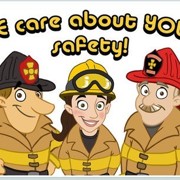
Whether you are heading out to the campsite, traveling cross-country or living in an RV, it's important to know about the fire and carbon monoxide (CO) hazards present in these moveable structures.
Life-saving tips for the RV user:
- Check propane supply lines for kinks or damage. Test all fitting connections with a gas leak detection device.
- Make sure generator exhaust is pointed away and downwind of the RV.
- Stay in the cooking area when preparing food. If you leave, turn off the burner.
- Have a portable fire extinguisher on board that you can easily reach. Adults should take a brief training course on how to properly use an extinguisher. Remember the acronym P.A.S.S. — Pull, Aim, Squeeze, Sweep.
- Keep doors and windows clear for escape and make sure they open easily. Practice a fire escape plan with everyone staying in the RV.
- Don't overload the electrical outlets. Using too many electrical appliances at the same time can cause a fire.
- Have a trained technician thoroughly inspect your RV at least once a year.
Carbon monoxide in recreational vehicles
CO is an odorless, tasteless, invisible killer that can readily build up within the small area of an RV and cause severe illness and possibly death. Improper use of generators is a leading cause of CO poisoning. Malfunctioning gas-fed appliances are an additional source of CO poisoning.

Install smoke and CO alarms
All RVs should have working CO and smoke alarms installed inside to alert you of potential life-threatening hazards. Test your alarms every month.
RV fire statistics
From 2018 to 2020, there were an estimated average of 4,200 RV fires reported to U.S. fire departments each year. These fires resulted in an estimated 15 deaths, 125 injuries and $60,300,000 in property loss.
Most of these fires occur:
- Between the hours of 2 and 3 p.m.
- During the months of May through August.
- On Fridays and Saturdays.
More statistics: RV fires data snapshot
Source: USFA - U. S. Fire Administration

